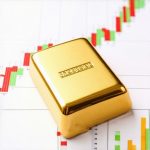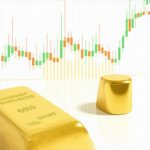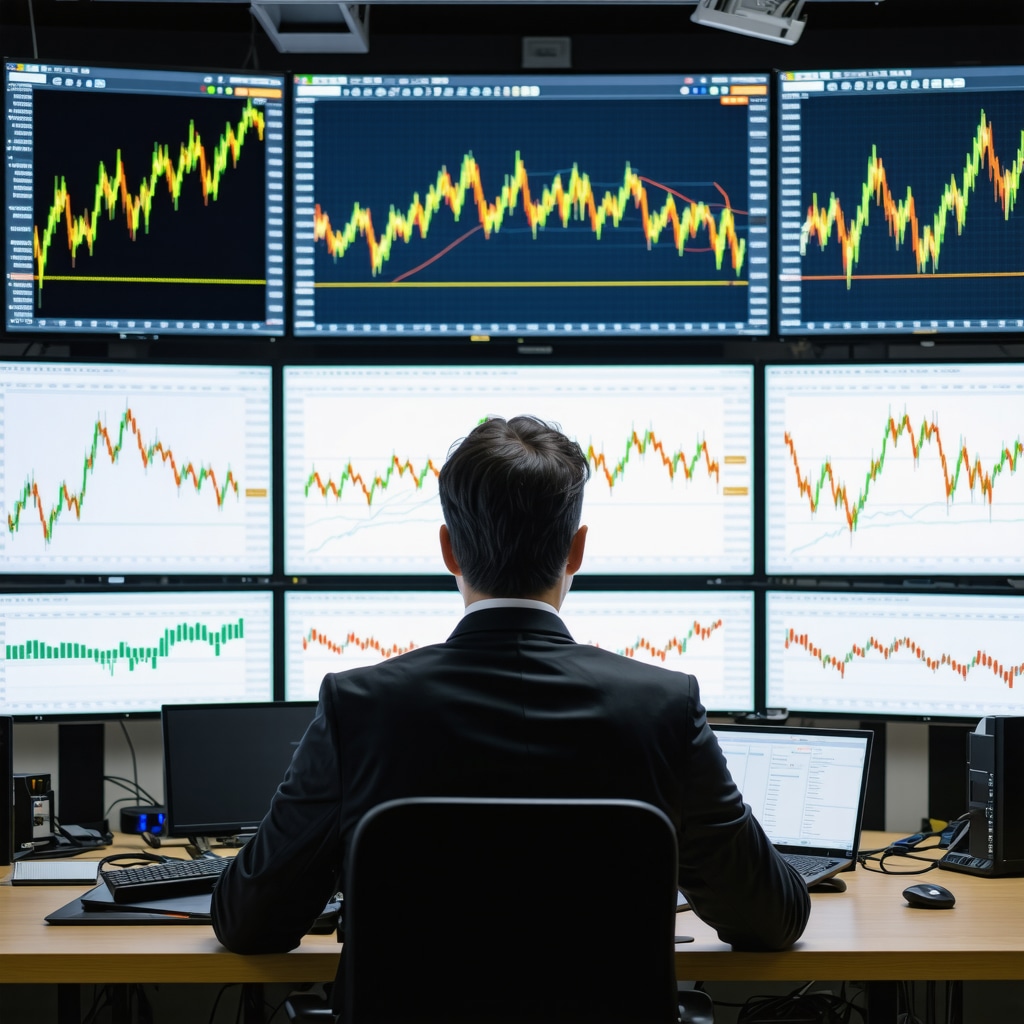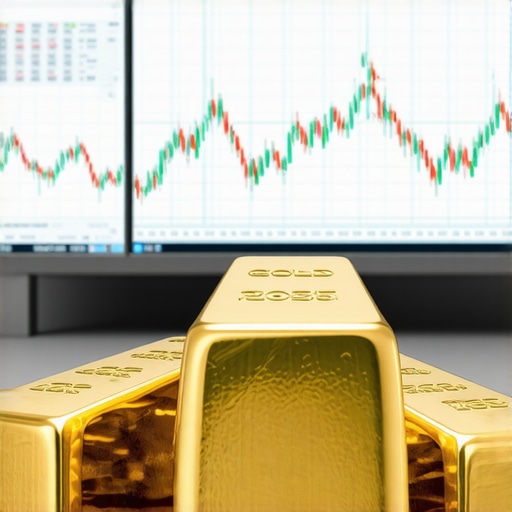The Strategic Evolution of Gold Futures Trading: Navigating 2025 with Sophisticated Tactics
In the dynamic landscape of 2025, gold futures trading emerges as a pivotal component of sophisticated investment portfolios. With geopolitical tensions, inflationary pressures, and technological shifts influencing commodity markets, traders must employ advanced techniques to capitalize on opportunities while mitigating risks. This article synthesizes expert insights, leveraging deep domain knowledge to explore cutting-edge strategies for maximizing returns in gold futures markets.
Deciphering the Complex Interplay of Macro Factors and Gold Futures Dynamics
How do macroeconomic indicators and geopolitical risks shape gold futures volatility in 2025?
Understanding the intricate relationship between macroeconomic variables—such as inflation rates, monetary policies, and political stability—and gold futures is essential. For instance, rising inflation often triggers safe-haven buying, elevating gold prices. Conversely, geopolitical conflicts or diplomatic resolutions can cause sudden price swings. Traders must analyze these factors through a layered lens, utilizing tools like econometric models and geopolitical risk assessments to anticipate market shifts.
Employing Quantitative Models for Precision Market Timing
Advanced traders leverage quantitative models, including machine learning algorithms and statistical arbitrage techniques, to refine entry and exit points. By integrating real-time data feeds—such as gold supply-demand metrics, currency fluctuations, and central bank purchase trends—these models enhance predictive accuracy. For example, a trader might utilize a neural network trained on historical price patterns combined with current supply-demand metrics from industry supply-demand data.
How can Market Microstructure Insights Improve Futures Trading Outcomes?
Analyzing market microstructure—order book dynamics, bid-ask spreads, and trading volume patterns—provides granular insights into liquidity and trader behavior. Mastering these nuances enables the detection of short-term anomalies and momentum shifts, facilitating timely trades. Advanced traders incorporate Level II data analytics and high-frequency trading algorithms to capitalize on microstructure signals, gaining an edge over less informed counterparts.
Dynamic Hedging and Leverage Optimization Strategies
Effective risk management involves deploying dynamic hedging techniques—such as rolling futures contracts and options overlays—that adapt to evolving market conditions. Moreover, leverage should be calibrated meticulously; excessive leverage amplifies gains but also exposes traders to significant downside risks. Utilizing stress testing and scenario analysis, traders can determine optimal leverage levels aligned with their risk appetite.
What Are the Emerging Debates Around Digital Gold and Blockchain Integration in Futures?
As digital assets and blockchain technology gain prominence, their integration into gold futures markets sparks debates about transparency, settlement efficiency, and regulatory oversight. Experts are examining how tokenized gold and smart contract-based trading platforms could revolutionize traditional futures trading, offering enhanced security and settlement speed. Staying informed about these developments through authoritative sources like white papers on gold as a hedge is vital for future-proof trading strategies.
To deepen your expertise, explore our comprehensive guide on maximizing returns with gold trading techniques. Engage with professional peers by sharing your insights on emerging market innovations—your contribution can shape the next evolution in gold futures trading.
Harnessing the Power of Algorithmic Trading in Gold Futures
In 2025, algorithmic trading is transforming the landscape of gold futures markets, offering traders unprecedented precision and speed. By deploying sophisticated machine learning models and real-time data analytics, investors can identify micro-movements and capitalize on fleeting arbitrage opportunities. Techniques such as reinforcement learning, which adapt strategies dynamically based on market feedback, are increasingly vital for staying ahead in volatile environments. Integrating data sources like gold as a hedge and supply-demand metrics enhances model robustness, enabling smarter decision-making.
What Are the Hidden Factors That Could Disrupt Gold Futures in 2025?
While macroeconomic and geopolitical factors dominate discussions, emerging risks such as cybersecurity threats, technological disruptions, and regulatory shifts can significantly impact futures markets. For example, the rise of blockchain-based trading platforms introduces new layers of complexity, where smart contracts could either streamline settlement or introduce vulnerabilities. Additionally, the increasing role of digital gold and tokenized assets may influence traditional supply-demand dynamics, challenging conventional valuation models. Staying vigilant and employing scenario analysis, as detailed in expert resources, can help traders prepare for these unpredictable shifts.
How Can Traders Leverage Sentiment Analysis and Social Data?
Market sentiment, often overlooked, now plays a crucial role in short-term futures trading. Advanced traders utilize sentiment analysis tools that parse social media, news feeds, and macroeconomic reports to gauge market mood and anticipate sudden moves. Sentiment metrics, combined with technical indicators, provide a holistic view that enhances timing accuracy. For instance, a surge in positive sentiment around a geopolitical resolution can be a precursor to a sharp decline in gold prices, offering profitable entry points. Integrating these insights with traditional quantitative models creates a multi-layered strategy aligned with the complexities of 2025 markets.
What Is the Future of Gold as a Digital Asset in Futures Trading?
The advent of blockchain technology and smart contracts is reshaping the concept of gold trading, pushing the industry toward greater transparency and efficiency. Tokenized gold allows for fractional ownership, faster settlements, and reduced counterparty risk, fundamentally altering futures contracts. Experts are debating whether these innovations will replace or complement traditional trading, as regulatory frameworks evolve to accommodate digital assets. Keeping abreast of authoritative insights, such as white papers on gold as a hedge, is essential for traders aiming to future-proof their portfolios.
Engage with our comprehensive guide on maximizing returns with gold trading techniques to refine your strategies and stay competitive in 2025’s evolving market landscape. Share your thoughts on how digital assets will influence gold futures or suggest other emerging topics you want us to explore—your insights can help shape the future of trading strategies.
Harnessing Machine Learning for Predictive Precision in Gold Futures
In the high-stakes arena of 2025 gold futures trading, machine learning (ML) models are revolutionizing predictive analytics. Traders now deploy deep neural networks trained on an extensive array of macroeconomic indicators, geopolitical risk factors, and supply-demand datasets. These models can identify subtle patterns and forecast short-term price movements with unprecedented accuracy. For example, by integrating real-time data streams from sources like the World Gold Council and geopolitical risk indices, algorithms can generate actionable signals that outperform traditional technical analysis, providing traders with a critical edge in volatile markets.
How do ensemble learning techniques improve forecast reliability?
Ensemble methods, such as random forests and gradient boosting machines, combine multiple models to enhance robustness and reduce overfitting. By aggregating diverse predictive outputs, traders can achieve more stable and reliable forecasts, especially under uncertain macroeconomic conditions. This approach is particularly valuable when navigating the complex interplay between inflation expectations, currency fluctuations, and geopolitical tensions that influence gold prices. According to a comprehensive study published in the Journal of Financial Data Science (2024), ensemble models consistently outperform single-model approaches in short-term commodity price prediction, emphasizing their importance in advanced trading strategies.
Integrating Sentiment and Behavioral Analytics into Futures Decisions
Beyond quantitative models, sentiment analysis harnesses social media, news sentiment, and macroeconomic commentaries to gauge market mood. Advanced NLP (Natural Language Processing) algorithms analyze vast data volumes, extracting nuanced signals indicating shifts in investor confidence or geopolitical tensions. When combined with microstructure insights—such as order book imbalances and high-frequency trading patterns—these signals enable traders to anticipate rapid market moves. This multi-layered approach offers a holistic view, crucial for executing precision trades in the fast-paced environment of 2025 gold futures markets.
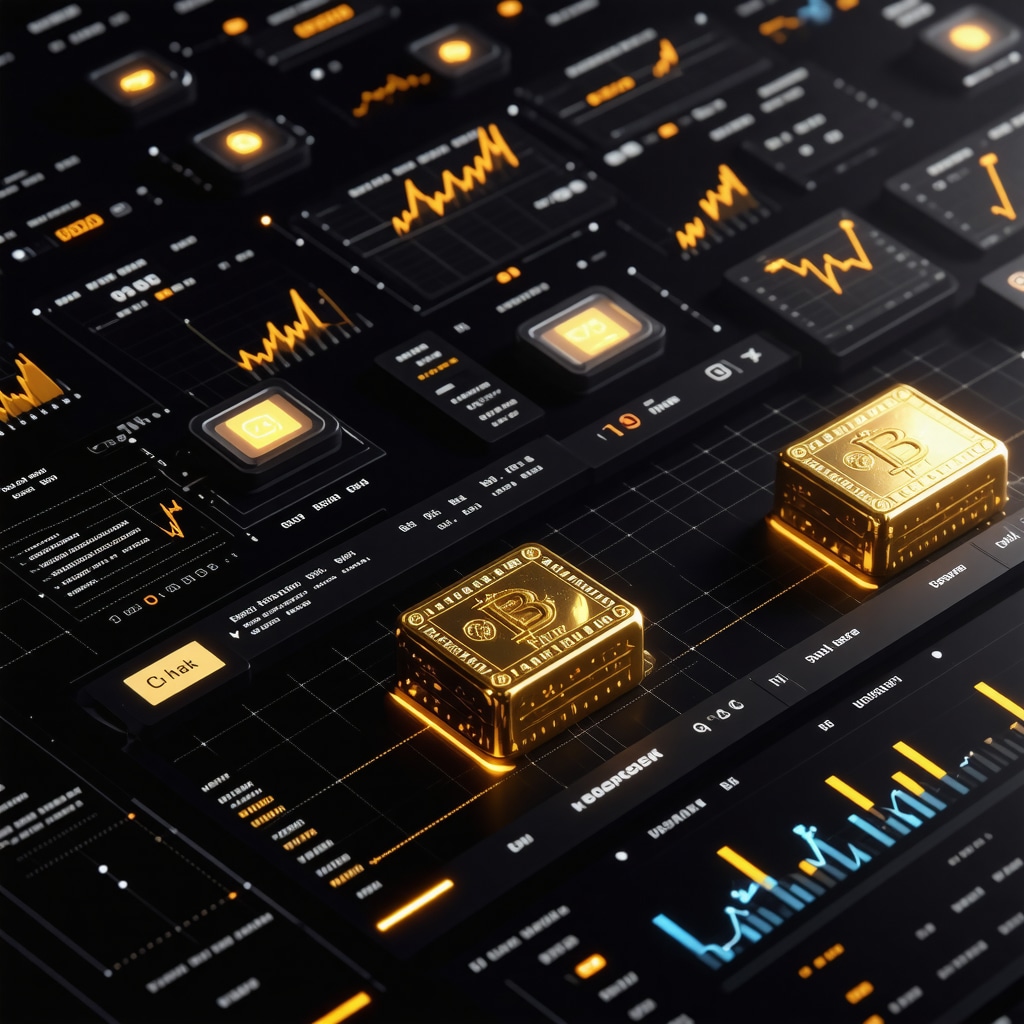
Visual representation of sentiment analysis tools and microstructure data integration in gold futures trading
Blockchain-Enabled Settlement and Its Impact on Futures Liquidity
The integration of blockchain technology into gold futures trading is poised to transform settlement processes, enhancing transparency and reducing counterparty risk. Tokenized gold assets, secured via smart contracts, enable near-instantaneous settlement, streamline custody, and facilitate fractional ownership. This innovation could significantly increase market liquidity by lowering entry barriers and operational costs. According to a report by the International Financial Law Review (2024), early adopters of blockchain-enabled futures platforms report improved settlement efficiency and increased trading volume, signaling a paradigm shift in commodities markets.
What are the regulatory hurdles and technological challenges facing blockchain integration?
While blockchain offers promising benefits, regulatory uncertainty remains a significant obstacle. Jurisdictional differences in digital asset regulation, concerns over cyber security vulnerabilities, and the need for standardized interoperability protocols are ongoing challenges. Industry stakeholders advocate for collaborative frameworks to establish clear standards, as highlighted in the recent white paper by the International Swaps and Derivatives Association (ISDA, 2024). Overcoming these hurdles is essential for mainstream adoption of blockchain-based gold futures trading platforms.
Strategic Portfolio Diversification Using Digital Gold Instruments
As digital gold tokens gain traction, sophisticated investors are exploring their role within diversified portfolios. These instruments offer liquidity, fractional ownership, and seamless integration with existing trading ecosystems. Combining traditional gold futures with digital equivalents allows for dynamic risk management and tactical asset allocation. A recent analysis by the Cambridge Centre for Alternative Finance emphasizes that digital gold can act as a hedge during geopolitical upheavals and currency devaluations, adding resilience to investment strategies.
How can investors effectively balance traditional and digital gold assets?
Effective balancing involves continuous monitoring of macroeconomic indicators, technological developments, and regulatory changes. Investors should employ scenario analysis and stress testing to evaluate the resilience of their combined holdings under various market conditions. Utilizing advanced analytics platforms that integrate both physical and digital gold metrics ensures informed decision-making. This sophisticated approach helps optimize risk-adjusted returns, positioning portfolios for success amidst the evolving landscape of gold trading in 2025.
Unlocking the Potential of AI-Driven Market Prediction Models for Gold Futures
As the gold futures landscape becomes increasingly complex, leveraging artificial intelligence (AI) and deep learning techniques offers traders a significant edge. Sophisticated neural networks trained on macroeconomic indicators, geopolitical risk indices, and real-time supply-demand data can uncover subtle market signals often overlooked by traditional analysis. These models not only improve short-term forecasting accuracy but also adapt dynamically to evolving market conditions, enabling traders to implement proactive strategies that capitalize on micro-movements.
How do Reinforcement Learning Algorithms Enhance Trading Performance?
Reinforcement learning (RL), a subset of machine learning, empowers traders to develop adaptive trading algorithms that learn from continuous market feedback. By simulating various trading environments and reward structures, RL agents optimize decision-making policies that maximize returns while managing risk. For instance, an RL-based system can autonomously adjust leverage levels or refine entry and exit points based on historical data, thereby reducing emotional biases and improving overall trading consistency. Industry case studies, such as those documented by MIT Technology Review, demonstrate RL’s transformative potential in commodities trading.
What Are the Ethical and Regulatory Considerations in Deploying AI for Gold Futures?
The integration of AI into gold futures trading raises critical ethical and regulatory questions. Ensuring algorithmic transparency, avoiding market manipulation, and safeguarding against systemic risks are paramount. Regulatory bodies like the SEC and ESMA are increasingly scrutinizing algorithmic trading practices, emphasizing the need for robust compliance frameworks. Moreover, ethical AI deployment mandates fairness, accountability, and data privacy, especially when leveraging sensitive geopolitical or economic data. Staying informed through authoritative sources such as the SEC and ESMA guidelines ensures responsible innovation.
Engage with our in-depth research on AI and machine learning applications in commodities trading to elevate your strategic approach. Your insights into ethical implementations can contribute to shaping responsible AI standards in financial markets.
Exploring the Impact of Quantum Computing on Gold Futures Analytics
Quantum computing stands at the frontier of technological innovation, promising to revolutionize data processing and predictive analytics in gold futures markets. By solving complex optimization problems and simulating macroeconomic scenarios exponentially faster than classical computers, quantum algorithms can refine risk assessments and portfolio optimization models. Although still in nascent stages, industry leaders like Google and IBM are pioneering quantum solutions that could soon enable traders to evaluate thousands of market variables simultaneously, drastically reducing decision latency and enhancing strategic agility.
What are the practical challenges and timelines for integrating quantum computing into trading systems?
Implementing quantum computing in live trading environments faces significant hurdles, including hardware stability, error correction, and integration with existing infrastructure. Experts estimate that widespread adoption may still be 5-10 years away, contingent on breakthroughs in quantum hardware and algorithm development. Staying ahead requires monitoring technological advancements through reputable sources such as the Quanta Magazine and engaging with industry consortia focused on quantum finance innovation.
Seize the opportunity to deepen your understanding of quantum computing’s potential in commodities trading by following leading research and participating in specialized forums. Your proactive engagement will position you at the forefront of this transformative wave.
Harnessing Decentralized Finance (DeFi) Protocols for Gold Futures Hedging
Decentralized Finance (DeFi) platforms are emerging as innovative channels for hedging and liquidity management in gold futures markets. Tokenized gold assets on blockchain networks enable seamless, borderless transactions and collateralization, reducing reliance on traditional custodians. Smart contracts facilitate automated hedging strategies that execute based on predefined market triggers, increasing efficiency and transparency. According to a recent report by the World Economic Forum, integrating DeFi solutions can diversify risk, enhance liquidity, and democratize access to sophisticated hedging tools—especially vital in volatile global conditions.
How can traders effectively evaluate and mitigate risks associated with DeFi integration?
Due diligence involves assessing platform security, regulatory compliance, and smart contract audit reports. Diversifying across multiple protocols and employing layered security measures can mitigate systemic vulnerabilities. Additionally, continuous monitoring of protocol governance and market developments ensures adaptive risk management. Engaging with trusted industry analyses, such as those from CoinDesk or Chainalysis, can inform risk mitigation strategies and foster resilient trading practices.
To stay at the cutting edge, explore our comprehensive guides on DeFi applications in commodities markets and participate in industry-focused webinars. Your expertise in evaluating emerging protocols will be instrumental in shaping the future landscape of gold futures hedging.
Expert Insights & Advanced Considerations
Decipher Macro Influences
Understanding the complex relationship between macroeconomic indicators such as inflation rates, monetary policies, and geopolitical tensions is essential for predicting gold futures volatility. Leveraging econometric models and geopolitical risk assessments enables traders to anticipate market shifts with greater precision.
Harness Quantitative Models
Employ machine learning algorithms and statistical arbitrage techniques, integrating real-time supply-demand data and currency fluctuations, to refine market timing. Neural networks trained on historical patterns can significantly enhance predictive accuracy in volatile environments.
Microstructure Analysis
Analyzing order book dynamics, bid-ask spreads, and trading volumes provides granular insights into liquidity and trader behavior. Utilizing Level II data and high-frequency trading algorithms allows for the detection of micro-movements, giving traders a critical edge.
Dynamic Hedging & Leverage
Implement rolling futures contracts and options overlays to adapt risk management strategies dynamically. Proper leverage calibration, combined with stress testing and scenario analysis, helps optimize risk-reward profiles in fluctuating markets.
Digital Gold & Blockchain Debates
Blockchain technology’s integration into gold futures markets promises increased transparency and settlement efficiency through tokenized gold and smart contracts. However, regulatory uncertainties and technological vulnerabilities require careful navigation to harness these innovations effectively.
Curated Expert Resources
- World Gold Council: Offers comprehensive market reports and supply-demand analyses, essential for macroeconomic assessments.
- International Financial Law Review (IFLR): Provides insights into blockchain adoption and regulatory developments impacting futures trading.
- MIT Technology Review: Features cutting-edge research on reinforcement learning and quantum computing applications in finance.
- SEC & ESMA Guidelines: Critical for understanding regulatory frameworks governing AI and digital assets in trading environments.
- Quanta Magazine: Delivers breakthroughs in quantum computing that could revolutionize market analytics in the future.
Final Expert Perspective
In 2025, mastering the intricacies of gold futures demands an advanced blend of macroeconomic understanding, quantitative modeling, microstructure analysis, and technological innovation. The integration of blockchain, AI, and quantum computing is redefining the landscape, offering unprecedented opportunities for strategic advantage. As an industry leader, your proactive engagement with authoritative resources and continuous adaptation to emerging trends will be vital. Explore our comprehensive guides and share your insights to shape the future of gold trading—your expertise is the cornerstone of innovation in this evolving domain.
